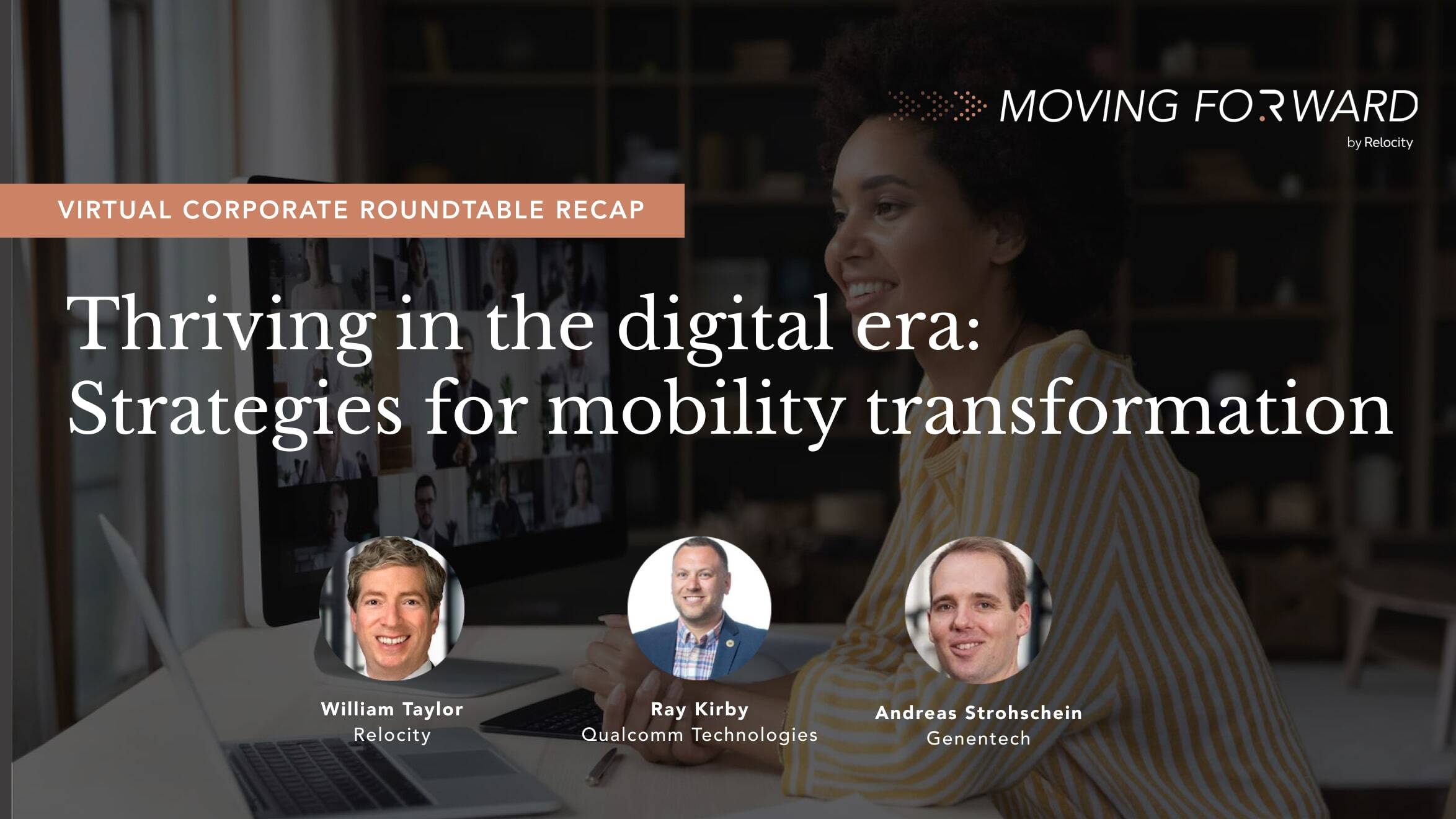The modernized relocation journey: How AI is redefining global mobility
The future of global talent mobility with AI - 3 use cases The world of global talent mobility is evolving rapidly, and at the forefront of this...
This is the 3rd article in our AI in Relocation Series. You can read the full series here.
If you’re in Global Mobility, you’ve probably felt it: the buzz around AI is getting louder. Tools are getting smarter. Leadership is asking questions. And your inbox is filling up with invites to “future of work” webinars.
But if you’re being honest, the excitement is often matched with anxiety.
What does AI mean for my role? Will I be replaced? Am I behind the curve?
You’re not alone. Many mobility professionals are navigating the same questions. The good news? AI isn’t here to replace your expertise—it’s here to elevate it.
This blog is your practical guide to moving from overwhelmed to empowered when it comes to AI.
Global Mobility has always been one of the most complex and human-focused areas of HR. Specialists must balance logistics, compliance, cultural sensitivity, cost control, and—most importantly—people. And now, they're expected to do all of that while adopting AI.
According to Deloitte’s 2024 Global Human Capital Trends report, 62% of HR professionals say their roles are evolving faster than their organization’s ability to keep up. This is particularly true for mobility teams, who sit at the intersection of employee experience, finance, legal, and global operations.
It’s no wonder mobility professionals feel stretched. The job is changing rapidly, and many haven’t been given the resources—or reassurance—they need to adapt with confidence.
Before you can empower your team, you need to understand their fears. We’ve heard it all:
These concerns aren’t irrational—they’re rooted in reality. According to PwC, 30% of jobs are at risk of automation by the mid-2030s. But here’s what’s often missed: most of those jobs won’t disappear—they’ll evolve.
What AI can’t do is understand the nuance of a family’s cultural transition, negotiate delicate housing issues, or provide human reassurance that everything will be okay. These are skills AI will never replace. And they’re the foundation of great mobility programs.
The key to helping teams embrace AI isn’t about pushing tools. It’s about co-creating a roadmap that shows exactly how AI fits into their role, how it supports their growth, and what success looks like. Key areas to address in the inevitable introduction and adoption of AI in talent mobility:
Let's walk through how some of today/s largest companies are approaching AI in their Global Talent Mobility programs:
The first step in AI adoption is mindset. Too often, the narrative is framed as “man vs. machine.” But AI isn’t taking away the human element—it’s eliminating the repetitive tasks that burn people out. You are needed because of your unique skillset, knowledge, and expertise. AI helps you scale and streamline.
Think of AI as your digital assistant. It can help you:
Instead of fearing AI, mobility specialists can begin to see it as a powerful support system.
Resistance often comes from a lack of familiarity. And familiarity comes from training.
Here’s how to introduce AI without intimidation:
Empowerment starts with understanding. When people see how AI makes their job easier—not harder—the fear begins to fade.
Adoption thrives on momentum. So celebrate every step. With good partners and modern software, you gain access to insights and data early and often.
Example wins:
These stories build internal champions. And champions spread confidence.
AI’s value isn’t just speed—it’s precision, consistency, and space for creativity.
Let your teams know it’s okay to use the time AI frees up to:
AI gives back time. Great mobility teams use it to grow their impact.
Even the best tools won’t succeed without empathy.
Change brings up questions like:
"Am I still valuable?"
"Am I keeping up? Will I be left behind?"
The answer needs to come loud and clear from leadership:
“You’re not being replaced. You’re being refocused.”
Involve your teams early. Make room for feedback. Let them shape how AI shows up in their work. Ownership reduces fear.
Trying to make a piece of technology “fit” is like trying to fit in your high school jeans, it can be done, but more often than not, you realize it’s just not going to work.
You’ll want to identify your core metrics and pains, and then align those with a partner who delivers purpose-built relocation software powered by AI, like Relocity. For many, the solution to “where do I start” involves improving the employee experience through the use of digital platforms designed to guide employees through their relocation through advanced AI tracking, guides, and help.
Key items to include on your checklist:
Imagine a week in which your mobility team doesn’t spend hours:
Instead, they’re using that time to:
That’s the promise of AI, not just efficiency, but elevation.
As AI becomes more embedded in the workplace, the most successful mobility teams won’t be the most technical—they’ll be the most adaptive.
They’ll know how to delegate to machines. They’ll focus on the work that requires empathy, ethics, and experience. And they’ll be positioned as strategic partners to the business, not just logistical support.
Gartner predicts that by 2027, more than 50% of generative AI models used by enterprises will be tailored to specific industries or functions. That doesn’t mean every job changes overnight. But it does mean the change is happening—and the best time to get ahead of it is now.
Today’s leading companies are already starting to make use of AI technology and partners in their global talent mobility programs. Don’t “go it alone”. Instead, work with partners like Relocity who specialize in the employee relocation experience by understanding the combination of Human powered, AI-assisted is how modern organizations find success in this transition to AI.

The future of global talent mobility with AI - 3 use cases The world of global talent mobility is evolving rapidly, and at the forefront of this...

Why talent mobility needs a refresh Healthcare organizations invest significant time and resources in attracting top talent. But what happens when...

At Relocity’s latest corporate roundtable in the Moving Forward series on June 11, key industry leaders discussed technology's impact on relocation. ...
